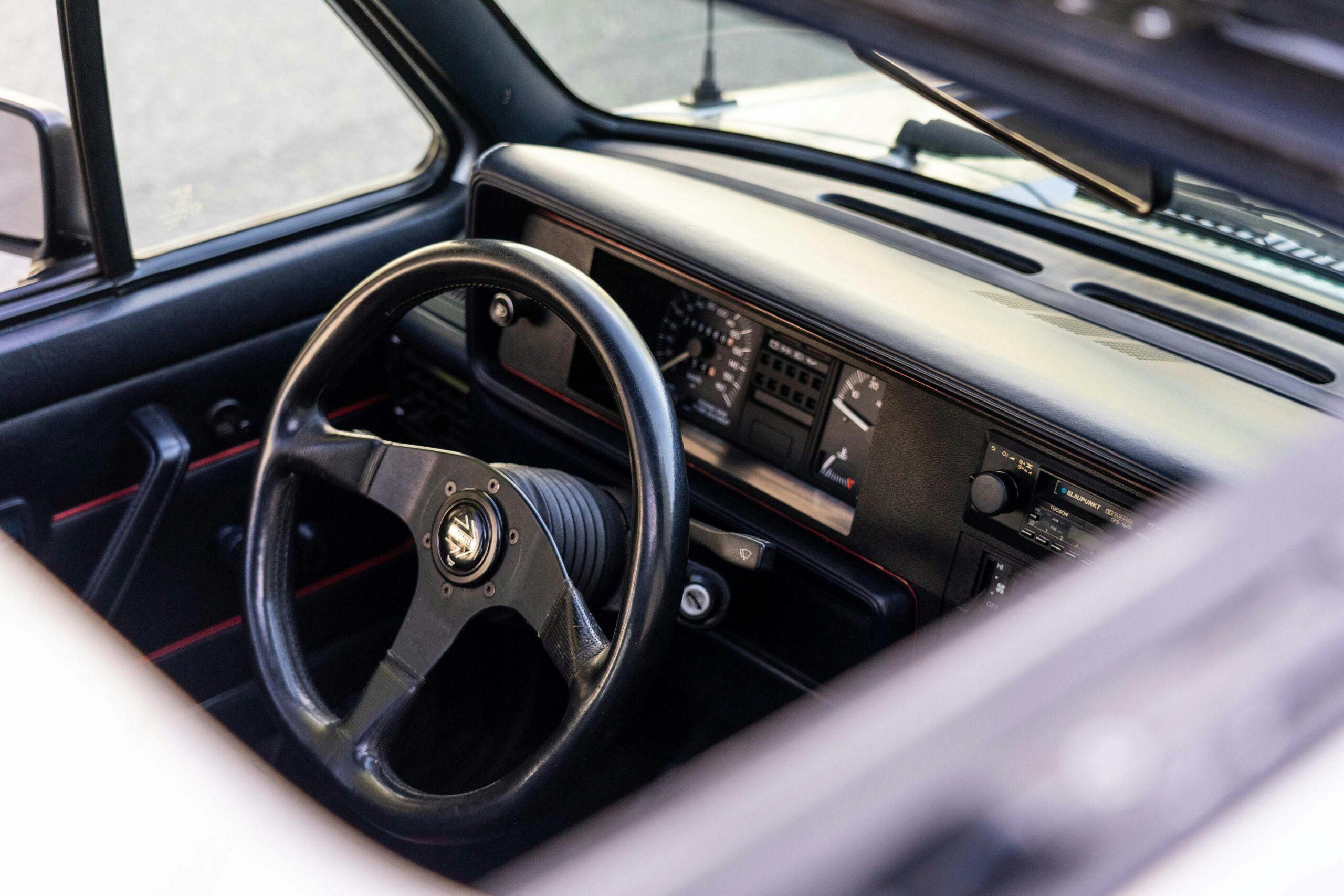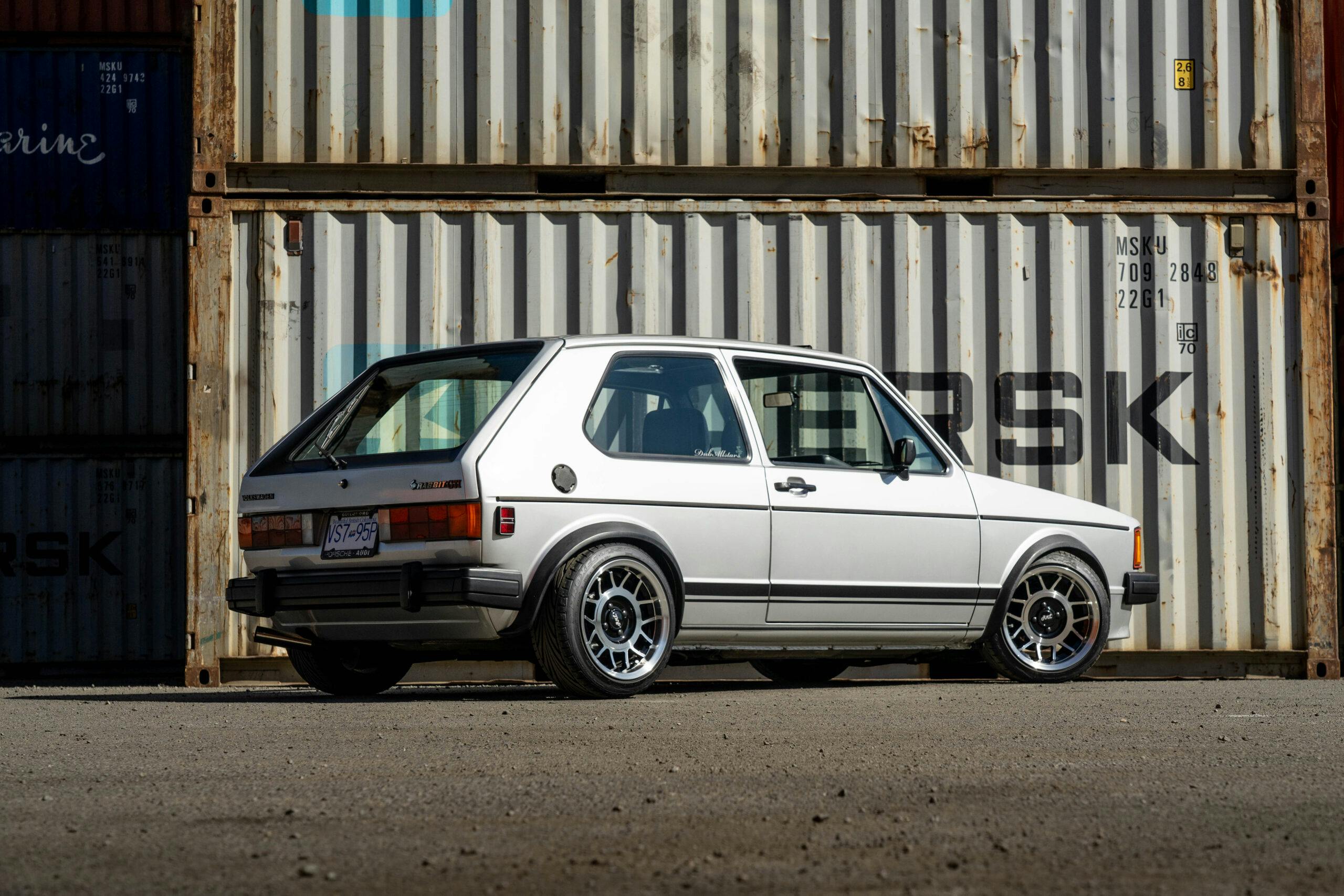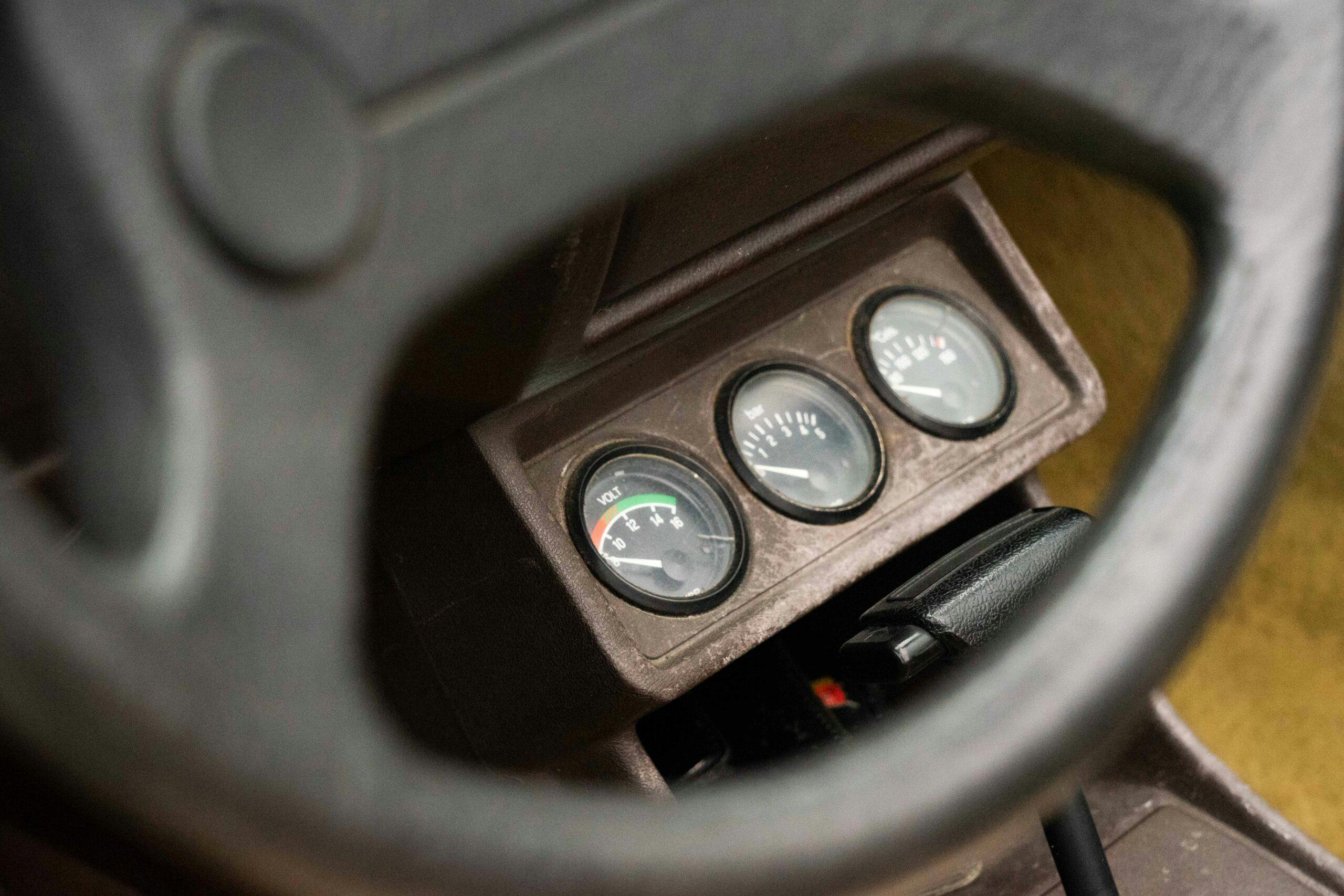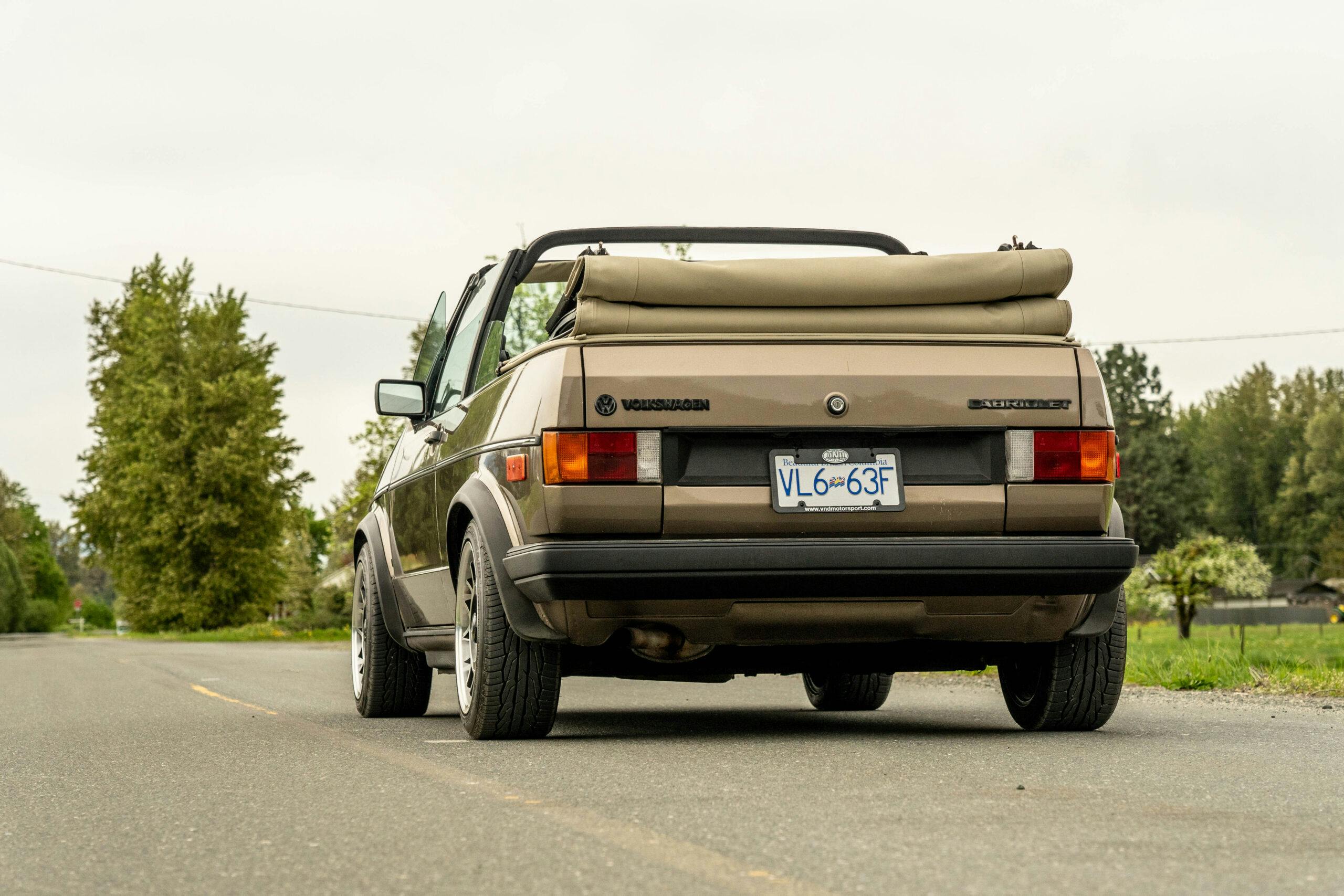Want to Feel Like a Kid Again? Get a Rabbit
Some things are just as much fun to experiencce as they look like they are going to be, and so it is with the first generation Volkswagen GTI. Gaze upon its tiny magnificence, that airy greenhouse, that dock-tailed terrier hatchback layout. Even the fuel cap is a work of genius, a little asterisk noting, *Achtung: contents may be habit forming.
Hop to it! Even in U.S.-spec trim with a 1.8L four-cylinder pumping out just 90 hp, this little bunny loves to scorch up the roads at what feels like ten million miles an hour. Everything’s square and Germanic and as sensible as a sweater vest, so why is this so much fun?
A group of road cyclists on a nearby path unclip their pegs while goggling, trying to wave us down. No chance, we’re at full commit around the roundabout, out the corner and upshift, glance at the speedometer and . . . wait, this is all perfectly legal?




Welcome to the joy of the definitive, if not the original, hot hatchback. For many enthusiasts, an early GTI (or even just the family Rabbit with a few go-fast parts) was that first flush of romance-on-wheels. You can say the same thing about the Mini Cooper for a generation before or the Honda Civic for the generation after, but the appeal of the Mk 1 Rabbit (neé Golf) is the kind of kid stuff some owners never grew out of. And you can see why. This thing’s a combustion-powered fountain of youth.
What cost, this sort of low-mileage perfection? First assumption to be corrected: The GTI you see here is not a low-mile car. It has nearly 200,000 miles on the odometer, yet still runs like a champ. Most of the paint is original—if you peer closely there’s a scuff or two—and adjusting the driver’s seat took a bit of wiggling. However, this little 1984 Rabbit GTI is even more perfect for those marks of character, and taken together they just add up to permission to drive the wheels off it. Which is what GTIs love to do.

“I bought it with my debit card,” says owner John Taylor. Those days are over now, as first-gen GTI prices are on the rise, but that is a more recent phenomenon, and there are plenty of owners like Taylor out there. He bought his first one in the 1990s and has essentially always had at least one in the fleet. VW enthusiasts tend to have several of them on the go. They are Rabbits after all. Famous for breeding. You turn around and suddenly you’ve got four of them.

This example does have a modified suspension, which adds to an even more jouncy, go-kart–like feel, but this is also one of the carefree elements of GTI ownership. Start tweaking things on other classic cars, and a gaggle of would-be concours judges come out of the underbrush, tutting and making notes on their clipboards. Keeping a Rabbit stock is appreciated in the VW community, but it is not a rule. Most owners adhere to a less-is-more philosophy, but there’s room for personalisation.
You could easily swap in a 16-valve engine from a later GTI, build up the brakes and suspension, and have a Rabbit capable of chasing down modern machinery. But there’s no need to add more power to get more enjoyment out of the car. The speed limit on the kind of windy roads this car is best on have not increased since it was new. The traffic on them does move quicker, but that just means you are making a qualifying run while everyone else around you is brains-off in their fridge-white crossovers.

There are many other ways to enjoy an iconic German sporting performance—an air-cooled Porsche 911, an E30 BMW M3—but your ticket to ride costs more. Even with the surge in Rabbit GTI prices in past years, it’s still easily within reach for the average collector. The market is waking up to the fact that pure driving experiential fun is harder to find in a modern form these days, and the early GTI was one of the last bargains out there.
And you don’t even have to get a GTI to have a fun little Rabbit runabout. This brown-on-brown 1985 Cabriolet is basically a rescue Rabbit. Owner Al Larson absolutely did not need another one in his home, already owning an Mk 1 and Mk 2 GTI, a Scirocco, a Eurovan, a Jetta, and all manner of other demands on time and money. But it was only $650 as a non-runner.
“I was like, well, I don’t need this at all, but I guess I’m going to have to go rescue this car,” he says.

The Cabriolet variant of the Rabbit is essentially a GTI with the roof cut off and an automatic transmission available as an option, which this one has. Cabs have a reputation as a girl’s car, in the same way some like to look down their noses at a first-generation Mazda Miata. Since when was being popular with the ladies a bad thing? And also, remember that Cyndi Lauper song?
Even with a three-speed automatic, the 1.8L engine has broad enough torque characteristics to not be slow. It’s not the kind of car you drive like a GTI, all pants-on-fire hurry, but it is the kind of experience where you can’t stop smiling like an idiot. This car would make Eeyore happy.




With the roof down, the Cabriolet is open to the elements in a way that modern convertibles really aren’t anymore. Drive a Boxster, and the windshield curves up into your field of view, with aerodynamics to keep the air from swirling around the cabin. In a 1980s Rabbit convertible, you might as well be driving around in one of those money-tornadoes from game shows. It’s a cross between a rollerskate and a hairdryer and it’s great.
The Golf is 50 this year, but the Mk 1 version doesn’t seem to know it. As a nameplate, the car grew up. Got heavier and more concerned with practical considerations.
Pop your favorite Duran Duran cassette in the tape deck and hit rewind. The first-generation Golf is still the essential hot hatchback, and there’s almost nothing else like it for making you feel like a kid again.




My dad raced an 83 GTI in SCCA’s Showroom Stock class. Compared to the 1984 Honda Civic hatchback we also had at the time, I thought it was kind of crude and rough. Granted it was the difference between a race car and street car but class rules at the time didn’t let you do much more than safety equipment, brake pads and tires so it wasn’t far from what a street car would feel like.
Don’t see these much anymore here in the rust belt. Same for the Honda’s. Ashes to Ashes, Rust to Rust.
I’m pretty sure these MK1 cars didn’t use galvinized steel body panels (which seems like a very un-German thing to do), so yeah, you don’t see too many around in the rust belt. Mine only has 70k miles, and it has spent a lot of its life indoors, but it still has quite a few areas of surface rust.
Strange, I had exactly the opposite experience with an ’83 GTI that served as my daily driver for almost ten years in two rust belt states. I was blown away that when I finally sold it, it had nary a spot of rust. Quite a different experience than I had had with other cars of the era, including a BMW 530i that crumbled into red powder under similar conditions.
Great article!
I love “It’s a cross between a rollerskate and a hairdryer and it’s great.”
Back in the 80s I had a two-door 1300. When the engine wore out I swapped in a reconditioned 1600 motor but kept the old four-speed gearbox (budget issues). It was vastly under-geared but accelerated like a champ and was a hoot to drive.
My very first car I purchased was a 1984 VW Rabbit GTi in Cashmere White. I remember taking it out at the dealership and came back 10mins later to sign papers LOL! Paid $13K CDN brand new back then with the added Blaupunkt stereo/speakers. It was the last year they made the Rabbit. I went everywhere in that thing; put on over 200,000km on it. That car was such a great handling package as is. So much fun!!
Fun cars, though I’d stick with a hardtop myself. That convertible never interested me.
Ours is a black 1984 Rabbit Convertible with a nice suspension, Corrado BBSs and a 2.0L16v swap. It was my wife’s first car and then her sister’s first car. Affectionately known as the B*tch Basket. Mechanically perfect but the body and interior are getting tired (lots of sun exposure!). I keep saying “We need to get rid of this thing, it’s just taking up space.” But then go for a drive and all cares are forgotten!
Did you do the engine swap or did it have the 16v when you bought it?
I purchased a new 1979 Plymouth Champ, 1.6L, twin stick just to autocross. I did pretty well in it as there were many contenders in that class. But I discovered the sheer fun of driving on the streets. I understand the article phrasing “Want to feel like a kid again?” If only I could find another Plymouth Champ or Dodge Colt twin stick. But they, I fear, are long gone. Been keeping an eye out for a GTI VW but they are getting $$$.
We had two Plymouth Champs with the twin stick. My brother always reminded me that you had essentially two reverse gears because sometimes you just needed a little more speed when in reverse.
First car was a Canadian-spec,1980 Rabbit ‘L’, (not base, not GTI, but a blend) manual, golf-ball shifter, dual sport mirrors, cloth seats, perfect driving position, and great visibility. Drove it for two years, crossed Canada and regret trading it instead of fixing the engine – but I did trade it on a 1986 Honda 1500S – quite a bit more car, smoother engine and less money than a 1986 GTI… but, you never forget your first car!
Great article Brendan, as always!
My wife’s cabrio is 1989 that we have own since 1995. I was going to sell it to make room for my motorcycles, but she insisted that I restore it in exchange for more bikes. It has become a restomod, fun project. The body was repainted (did not need any repairs), the top was replaced with a canvas one and all the padding, cabling, seals and headliner were also changed at that time. The suspension is coil overs with sway bars front and rear. The brakes are Corrado G 60 calipers with 11.0 in rotors and disc brakes with MK4 aluminum calipers in the rear. The engine is a 2.0L ,16V block with 11.1 compression, forged pistons for an 8V, ported/polished head. That head is flow bench ported with 8000rpm springs and titanium keepers and a 298 cam. It has a race header and a custom-built stainless-steel exhaust with V-band joints. Transaxle is a 16 V box (close ratio) with a 3.65 final and 0.73 fifth gear for highway cruising and Heim joints in the shifting mechanism for a positive selection. The only thing not touch is the interior, since the plaid seats are in mint condition. Took a few years but is a great looking cabby, oh and a very quick one around the Sebring track.
Thanks for the great article! I have driven many when I was in High school when they were 12 years old cars.
Never seen a triple white cab not driven by a knock out!
I am on the look out for one, Maybe my next trip to Vancouver will lead to one in my garage. The pickings are pretty slim in Toronto. Always like the silver with Blue interior the best!
I look back fondly at the ’87 GLI (8 valve) that my wife and I bought new (to replace a 1980 Audi 4000) just before we moved from San Francisco to New Orleans. Why, oh why, did I sell it?
The Saabs and VWs we went through afterward were good cars, but that Jetta was special.
Had a ’77 base Rabbit (in baby crap brown) for ten years. Bilsteins, sway bars, 70 profile Phoenix Stalflex tires, golf ball shifter, and Kamie front and deck lid spoilers. Even painted the rear window surround black to emulate the (unavailable then) GTI. I miss that car.
Maybe not Germaine to the conversation but I had a 2011 Golf w 5 spd
Great car until my son totaled it…
Shifter was smooth as Buttah…
I test-drove a base-style 1980 Rabbit, and almost ordered a better-equipped Rabbit. It was a lot of fun to drive, even with just the base (non-FI) engine, and a 4-speed instead of 5. Then when the GTI came out a few years later, I seriously considered one.